 Hartlepool Sports & Leisure
Hartlepool Sports & Leisure
- Cinemas, Theatres & Dance Halls
- Musicians & Bands
- At the Seaside
- Parks & Gardens
- Caravans & Camping
- Sport
 Hartlepool Transport
Hartlepool Transport
- Airfields & Aircraft
- Railways
- Buses & Commercial Vehicles
- Cars & Motorbikes
- The Ferry
- Horse drawn vehicles
 A Potted History Of Hartlepool
A Potted History Of Hartlepool
- Unidentified images
- Sources of information
- Archaeology & Ancient History
- Local Government
- Printed Notices & Papers
- Aerial Photographs
- Events, Visitors & VIPs
 Hartlepool Trade & Industry
Hartlepool Trade & Industry
- Trade Fairs
- Local businesses
- Iron & Steel
- Shops & Shopping
- Fishing industry
- Farming & Rural Landscape
- Pubs, Clubs & Hotels
 Hartlepool Health & Education
Hartlepool Health & Education
- Schools & Colleges
- Hospitals & Workhouses
- Public Health & Utilities
- Ambulance Service
- Police Services
- Fire Services
 Hartlepool People
Hartlepool People
 Hartlepool Places
Hartlepool Places
 Hartlepool at War
Hartlepool at War
 Hartlepool Ships & Shipping
Hartlepool Ships & Shipping

Seaton Pubs & Hotels
Details about Seaton Pubs & Hotels
Seaton's Public Houses, Hotels and Guesthouses.
Location
Related items () :
 Arch Hotel
Arch Hotel
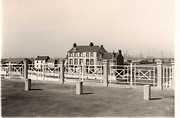 Donated by Hartlepool Library Services
Donated by Hartlepool Library ServicesPart of the Hartlepool Library collection
Dated 1981
Taken from the South Shelter in June 1981. Behind the Arch Hotel, commonly known at this time as the Arches, industrial chimneys stand proud against the skyline.
hht&n 2030
More detail » Arch Hotel and Magic Shop
Arch Hotel and Magic Shop
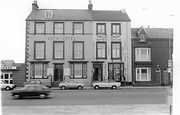 Donated by Hartlepool Library Services
Donated by Hartlepool Library ServicesPart of the Hartlepool Library collection
Dated 1981
By 1981 the Southolme had changed its name to the Arch Hotel. The Magic Shop next door was very popular selling all sorts of tricks, wigs, fancy dress costumes etc.
hht&n 1095
More detail » Bob Proctor and his cab
Bob Proctor and his cab
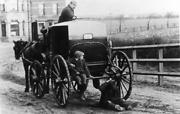 Created by James Whitehead Pattison
Donated by Bowes Museum, Barnard Castle, County Durham
Created by James Whitehead Pattison
Donated by Bowes Museum, Barnard Castle, County DurhamPart of the Pattison's Photographs collection
Dated 1888
Pattison's caption on this photo was 'Whip behind.' The two boys have hitched a lift on the running board and Bob is not too happy. The cab is outside Station Hotel which was built in 1873 and, sadly, demolished in the first part of the 21st century. Bob Proctor, who lived in Church Street, Seaton Carew, ran his cab to and from the railway station.
More detail » Bob Proctor and his cab (2)
Bob Proctor and his cab (2)
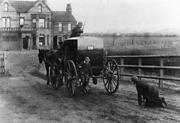 Created by James Whitehead Pattison
Donated by Bowes Museum, Barnard Castle, County Durham
Created by James Whitehead Pattison
Donated by Bowes Museum, Barnard Castle, County DurhamPart of the Pattison's Photographs collection
Dated 1888
In the second of two images of Bob's cab he appears to be shouting at the boy who is now on his hands and knees. The other boy seems to have escaped detection! The little cottage was built prior to the hotel and became the station master's house for a time before being demolished. The Station Hotel gave way to a Sainsbury store in the early 21st century.
More detail » George and Dragon Inn
George and Dragon Inn
 Created by Miss Parish
Donated by Bowes Museum, Barnard Castle, County Durham
Created by Miss Parish
Donated by Bowes Museum, Barnard Castle, County DurhamPart of the Part of the Pattison's Photograph Collection collection
A sketch drawn by Miss Parish c1800 showing the George & Dragon Inn which was built prior to 1812 and eventually became the Norton Hotel. In the early days a large clientele of respectable tradesmen & gentleman farmers along with their families used the hotel. The small cottages next to the inn made way for large houses that still stand today.
More detail »
 George and Dragon Inn landlords
George and Dragon Inn landlords
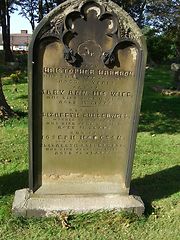 Created by Maureen Anderson
Donated by Maureen Anderson
Created by Maureen Anderson
Donated by Maureen AndersonDated 2007
The Inn was standing at least as early as 1812 as it is mentioned in Tate's booklet of that year. Robert Harbron is recorded as having been landlord of the Inn in 1829. He died aged 68 (newspaper death notice gives his age as 72) on 13 September 1835 and was buried in All Saints Churchyard, Stranton on 16 September 1835. His son Christopher who was born in 1811, took over as landlord. Christopher married Mary Ann Hodgson of Sunderland on 27 April 1840.
Newcastle Courant - 20 February 1841: 'To be sold by public auction at the house of Mr Christopher Harbron, Innkeeper, at the sign of the George and Dragon, in Seaton Carew in the County of Durham, on Thursday the 25th February 1841, at twelve o'clock, at noon (Messrs Sotheran, Auctioneers) the above old-established and well-accustomed Freehold Inn, eligibly situate on the North side of the square, in Seaton Carew aforesaid, together with the coach-house, stables and other requisite conveniences immediately adjoining, and occupied therewith. Seaton Carew, well knownas a much frequented bathing place, is distant about ten miles fromthe townof Stockton-on-Tees, and about three miles from the flourishing port of Hartlepool. The Stockton and Hartlepool Railway passes within a quarter of a mile from the village,which may be expected to participate in the advantages arising from the immediate vicinity of an extensive and increasing commerce.'
Christopher Harbron died on 30 June 1863 aged 55 and was interred in Holy Trinity Churchyard. His wife, Mary Ann, had died just 12 days before. By the time of their deaths their address was no longer an Inn but a lodging house.
In October of 1863 the building was advertised for sale and then in January 1864 to let. 'The house has lately been kept as a private boarding and lodging house, but the licence is still renewed.' At this time it was run by Miss Hodgson.
In September 1869 Mr Hopper applied for a spirit licence but it was refused because, although the property did have accommodation, it had not been used fror some years as an Inn.
In 1870 the Inn was in the possession of George Sewell and was being advertised to be sold for £900 or let for £50 freehold.
More detail »
 Houses and Seaton Hotel - c1870
Houses and Seaton Hotel - c1870
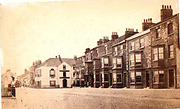 Donated by Maureen Anderson
Donated by Maureen AndersonThe row of houses was built in the 1820's with many taking in visitors during the summer season. This image is c1870.
More detail » Houses and Seaton Hotel - 2005
Houses and Seaton Hotel - 2005
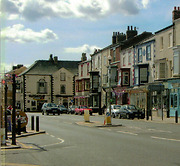 Created by Maureen Anderson
Donated by Maureen Anderson
Created by Maureen Anderson
Donated by Maureen AndersonDated 2005
The row of houses are now all in use as variuous types of shops. Taken in August 2005 bunting bedecks the shop fronts to celebrate the 60th anniversary of V.E. Day. 30 The Front has a large teapot painted between its upper windows from the time when it was the Victoria Tearooms (early 1990s)
More detail » Houses and Seaton Hotel - 2012
Houses and Seaton Hotel - 2012
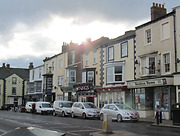 Created by Maureen Anderson
Donated by Maureen Anderson
Created by Maureen Anderson
Donated by Maureen AndersonDated 2012
In November 2012 the buildings have all had a face lift and are looking quite fresh and tidy.
More detail » Marine Hotel Bar (1)
Marine Hotel Bar (1)
 Donated by Hartlepool Library Service
Donated by Hartlepool Library ServicePart of the Hartlepool Library Service collection
 Marine Hotel Bar (2)
Marine Hotel Bar (2)
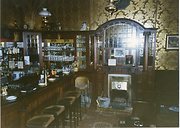 Donated by Hartlepool Library Service
Donated by Hartlepool Library ServicePart of the Hartlepool Library Service collection
 Marine Hotel Cocktail Bar
Marine Hotel Cocktail Bar
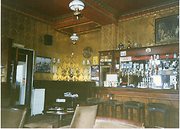 Donated by Hartlepool Library Service
Donated by Hartlepool Library ServicePart of the Hartlepool Library Service collection
 Marine Hotel Seaton Carew
Marine Hotel Seaton Carew
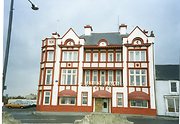 Donated by Hartlepool Library Service
Donated by Hartlepool Library ServicePart of the Hartlepool Library Service collection
 Marine Hotel, Seaton Carew
Marine Hotel, Seaton Carew
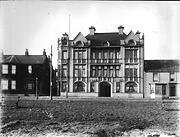 Donated by Douglas Ferriday
Donated by Douglas FerridayPart of the Library collection collection
Date unknown although tram lines are in evidence. The hotel was built in 1900 when the original Seven Stars Inn on the site was demolished.
HHT&N 603
More detail » Repairs to the Staincliffe Hotel
Repairs to the Staincliffe Hotel
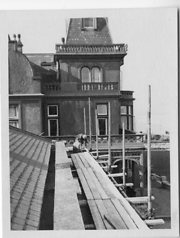 Donated by Hartlepool Museum Service
Donated by Hartlepool Museum ServiceTwo workmen setting up scaffolding on the Staincliffe Hotel.
More detail » Seaton Front prior to 1900
Seaton Front prior to 1900
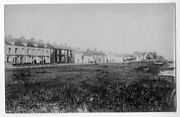 Donated by Hartlepool Museum Service
Donated by Hartlepool Museum ServiceSeaton Front prior to 1900. Note how close the beach is to the road. The Seven Stars PH is in the centre of the picture. This was demolished and The Marine Hotel built on the land in 1900.
More detail » Seaton Hall
Seaton Hall
The building was erected on the west side of the Green in 1803 by Robert Henry McDonald as the King's Head Inn. In June 1806 Nathan Leng became landlord, by April 1809 Robert Battey had taken over and by 1812 William Oliver. In December 1825 RH McDonald was advertising the Inn and land to be let. By 1827 it was occupied by William Webster who, in 1829, advertised the inn to be let for a term of years: 'with Stables and Other Conveniences and 61 1/2 acres of land, six stints on Seaton Snook. Together with or without the adjoining commodius Dwelling-House used as a Lodging-House'.
It became the property of Richard Walker and on his death in 1831 it was advertised by Anthony Walker to be sold by auction: 'The above premises have for many years been occupied by genteel families during the bathing season, for which purpose they are admirably adopted.' In 1839 the Inn was being advertised to let with the present tenant named as Anthony Walker.
From 1851 to 1861 Margaret Walker was the landlady (possibly Anthony Walker's daughter) & between 1862 & 1872 the inn was bought by JW Richardson who completely transformed the building & grounds. The stables & coach houses were converted to summer houses for the guests & croquet grounds were laid out.
William Thomlinson purchased the building in 1882 & converted it into a private residence re-naming it Sea View House. The house later became known as Seaton Hall. Thomlinson lived there until his death in 1943. In May 1945 the house was advertised for sale by auction at the Grand Hotel as being an:
'ivy clad house that stands back from the main road and contains entrance hall, with oak floor; oak panelled dining room, with two large bay windows; charming drawing room with large bow window overlooking the lawn; oak panelled inner hall, oak panelled morning room with two bay windows and fine fireplaces; telephone room, housemaid's pantry, cloakroom, excellent kitchen with Anglo-Simplex Range, larder etc on the ground floor. On the first floor is the handsome library, fitted with mahogany bookcases; 4 principal bedrooms, dressing room with fitted cupboards and wardrobes; 3 bathrooms and 2 maid's bedrooms. On the second floor are 4 good bedrooms whilst over is a large playroom known as 'The Crocodile' owing to it being fitted with panelling and doors from a steamer of that name wrecked in the Bay. At the rear of the house is the lawn with gravelled paths together with the garden, sitting room, flower room, conservatory and vinery. Close by is the large walled garden, with tennis court, lawns, rose beds and herbaceous borders and kitchen garden with fruit trees and bushes. The residence is fitted with fine panelling, beautiful fireplaces and doors; central heating with concealed radiators and all modern amenities and is in a very good state of repair and decoration. The outbuildings include heated garages for four cars laundry, boiler house, harness room, store room etc.'
In April 1946 a catering licence for Seaton Hall Guest House to operate as a catering establishment was granted to Mrs EE Rawsthorne of 25 Spring Garden Road, Hartlepool 'for guests who will stay less than five days and also for more permanent boarders but it is not intended to operate as a cafe.'
By 1951 the building had become the Seaton Hall Hotel and was taken over by Mrs Cora Hudson. In 1954 the Hotel was for sale. There was a suggestion of the council purchasing the building as an old folks home but this was decided against because of the future cost of repairs on such an old building. The Hotel closed and remained so until 1956 when the West Hartlepool Education Committee rented the building as temporary accommodation for students of the fire damaged College of Art. The lease was to run until September 1957.
In May of 1975 the Hotel was being advertised for sale as 'lavishly improved' and with '17 letting bedrooms.'
In 1988 the building was converted to become a nursing home by the present (2020) owners. Many of the original features such as panelling and the fireplaces have been retained.
More detail »
 Seaton Hall (1)
Seaton Hall (1)
 Created by James Whitehead Pattison
Donated by Bowes Museum, Barnard Castle, County Durham
Created by James Whitehead Pattison
Donated by Bowes Museum, Barnard Castle, County DurhamPart of the Part of the Pattison's Photographs collection
Dated 1888
North-west corner of the Green showing the large ivy covered Seaton Hall which started life in 1803 as The King's Head Inn. At the time of this image the Hall belonged to Colonel Thomlinson.
More detail » Seaton Hall (2)
Seaton Hall (2)
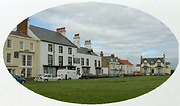 Created by Maureen Anderson
Donated by Maureen Anderson
Created by Maureen Anderson
Donated by Maureen AndersonDated 2008
Seaton Hall is now (2015) a nursing home. Built in 1803 as an inn it has been a private residence & a hotel over the years. The interior still boasts many original features such as fireplaces & wood-panelling.
More detail » Seaton Hall Hotel
Seaton Hall Hotel
 Donated by Hartlepool Library Service
Donated by Hartlepool Library ServiceSeaton Hall Hotel, The Green, Seaton Carew was built as the King's Head Inn in 1803. The premises are now a nursing home.
More detail » Seaton Hotel
Seaton Hotel
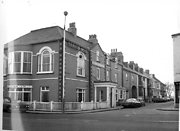 Donated by Hartlepool Library Service
Donated by Hartlepool Library ServiceThe Seaton Hotel, Church Street, Seaton Carew. A view of the Hotel with the fence around the outside. The fence was removed in the 1990s.
More detail » Seaton Hotel
Seaton Hotel
From 1787 the Ship Inn was being advertised to be let with two fields adjioning and several houses and garths. The occupants of the houses were Richard Walker, Joseph Dobson senior, Elizabeth Bell, Ann Liddell, James Lithgo and Robert Ferguson.
Newcastle Courant 19th February 1791:
'To be let (for a term of years if required) and entered upon the 12th of May next, the Ship Inn at Seaton Carew near Hartlepool, with the gardens, stables, coach houses and other offices and conveniences, and a sufficient quantity of ground thereunto adjoining. Seaton is well known to be the most pleasant and elible situation on the coast for sea-bathing. The town is close upon the beach which is remakably fine smooth and firm for several miles on each side and furnishes one of the most pleasing rides in the country, commanding not only a beautiful sea prospect, but a delightful view of the Tees Bay, Cleveland Coast, hills &c on the opposite shore. This Inn has been for many years much frequented and well accustomed, particularly in the Bathing Season; and to render it more commodious and to encourage a good Tenant, the Proprietor is willing to make such additions and improvements as may be deemed useful and necessary. Mr George Metcalf of Seaton will show the Premises; and Mr Mowbray of Sherburn House, near Durham will let the same.'
It appears that the property did not attract a tenant as George Pearson, a wealthy gentleman of Durham who already had considerably property in Seaton Carew, by 1792 had purchased the Ship Inn & all that went with it. By 1794 he had pulled down the old building & had a coach house & three adjoining houses built on the site to cater for the wealthy Quakers who frequented the village during the summer months. The coach house was named the New Inn & remained so until the name changed to the Seaton Hotel between 1800 & 1804 although, on occasion, up until 1808 the media still referred to the property as the Ship Inn. The lodging houses in Church Street were connected by a passageway through the cellars from the inn kitchen.
More detail » Seaton Hotel
Seaton Hotel
 Donated by Maureen Anderson
Donated by Maureen AndersonPart of the Hartlepool Public Houses collection
An early image of the hotel. It can clearly be seen by that a building has been removed between the hotel and the building opposite.The structures that can be seen to the rear of the hotel have also changed.
More detail » Seaton Hotel
Seaton Hotel
 Donated by Hartlepool Museum Service
Donated by Hartlepool Museum ServiceEarly picture of the Seaton Hotel when the proprieter was G Hodgson (c1902). I have never seen a picture with a Garage sign above the bay window. There is also adverts for food on the front to the building.
More detail » Seaton Hotel 1902
Seaton Hotel 1902
 Donated by Hartlepool Museum Service
Donated by Hartlepool Museum ServicePart of the Hartlepool Public Houses collection
Seaton Hotel, Seaton Carew. When this image was taken in 1902 Mr Hodgson was the landlord.
HHT&N 600
More detail » Seaton Hotel 2012
Seaton Hotel 2012
 Created by Maureen Anderson
Donated by Maureen Anderson
Created by Maureen Anderson
Donated by Maureen AndersonPart of the Hartlepool Public Houses collection
Dated 2012
In November 2012 after having been closed for some time the hotel was sold by the brewery into private ownership.
More detail » Seven Stars Inn Seaton Carew
Seven Stars Inn Seaton Carew
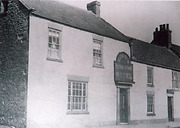 Donated by Maureen Anderson
Donated by Maureen AndersonThe Seven Stars Inn may have been built after George Pearson's New Inn in 1792 but is more likely to have been a converted cottage of an earlier date. John Corner appears to have been the first landlord with his daughter Elizabeth Hayes Good & her husband George following until George's death in 1873. Elizabeth, born c1830, carried on as landlady until 1899 when the Inn was sold. Elizabeth died in 1904.
The Inn was sold by auction on 8 June 1899 to Camerons and Co., West Hartlepool for the sum of £5200. In August an application was granted to rebuild the Seven Stars 'so as to make it a handsome building for the accommodation of visitors and others.' The new building was the Marine Hotel.
More detail » Seven Stars Inn Seaton Carew
Seven Stars Inn Seaton Carew
 Part of the Hartlepool Museum Service collection
Part of the Hartlepool Museum Service collectionThe Seven Stars Inn was first licenced in the early 1800s and in 1899 was bought by Cameron's at auction. The current Marine Hotel was built on the site in 1900 and to commemorate this, seven stars are depicted on the outside of the building.
In the early years of the hotel, the owner John Corner brewed beer himself in the inn.
(from Lion Roars and Monkey Bites by Marie-Louise McKay)
More detail » Seven Stars Inn Seaton Carew (2)
Seven Stars Inn Seaton Carew (2)
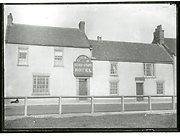 Part of the Hartlepool Museum Service collection
Part of the Hartlepool Museum Service collectionThe name over the door is 'Good's'. From 1853-1881, the landlord was George Good and from 1881-1900 it was Elizabeth Good (daughter of the first landlord, John Corner)
The smaller building to the right is still part of the current Marine Hotel.
More detail » Seven Stars Inn and Marine Hotel (1)
Seven Stars Inn and Marine Hotel (1)
 Created by Edward Backhouse
Donated by Bowes Museum, Barnard Castle, County Durham
Created by Edward Backhouse
Donated by Bowes Museum, Barnard Castle, County DurhamPart of the Pattison's Photographs collection
Dated 1853
Seven Stars Inn in 1853. It was demolished and the Marine Hotel built on the site in 1900/1901. The large house next door was Ashburne House and belonged to Edward Backhouse who used it for his summer visits to Seaton. When he died in 1879 the house was left to Edward Backhouse Mounsey. The house was eventually demolished and the land became a car park.
More detail »
 Seven Stars Inn and Marine Hotel (2)
Seven Stars Inn and Marine Hotel (2)
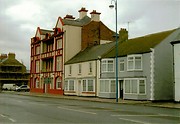 Created by Maureen Anderson
Donated by Maureen Anderson
Created by Maureen Anderson
Donated by Maureen AndersonDated 2005
Showing the Marine Hotel, car park and what was Krimo's Restaurant in April 2005. The cottages shown on the previous photo remain. One became part of the Marine Hotel's dining room & the other was converted into flats.
More detail » Seven Stars Inn rear - 1888
Seven Stars Inn rear - 1888
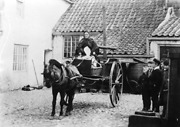 Created by James Whitehead Pattison
Donated by Bowes Museum, Barnard Castle, County Durham
Created by James Whitehead Pattison
Donated by Bowes Museum, Barnard Castle, County DurhamPart of the Pattison's Photographs collection
Dated 1888
Landlady Elizabeth Hayes Good (born c1830 died 1904) at the rear of the Seven Stars Inn, Seaton Carew. In June 1900 an auction was held for all the fixtures & fittings & a pony trap from the Seven Stars before the inn was demolished to make way for the Marine Hotel.
More detail » Staincliffe Hotel
Staincliffe Hotel
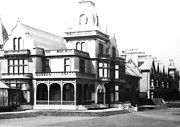 Donated by Hartlepool Museum Service
Donated by Hartlepool Museum ServicePart of the Hartlepool Public Houses collection
 Staincliffe Hotel
Staincliffe Hotel
 Donated by Hartlepool Library Services
Donated by Hartlepool Library ServicesPart of the Hartlepool Public Houses collection
Dated 1987
By the time this photo was taken in 1987 the cupola to the top of the building, used as an art studio by Thomas Walker, has been removed. The porch has also been removed and the conservatory between the main building and the chapel has been replaced with a solid structure.
HHT&N 2014
More detail » Staincliffe Hotel - The Terrace
Staincliffe Hotel - The Terrace
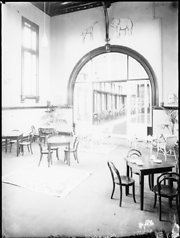 Donated by Hartlepool Museum Service
Donated by Hartlepool Museum ServicePart of the Hartlepool Public Houses collection
 Staincliffe Hotel 2014
Staincliffe Hotel 2014
 Created by Don Stephenson
Donated by Don Stephenson
Created by Don Stephenson
Donated by Don StephensonPart of the Hartlepool Public Houses collection
The Staincliffe Hotel, The Front, Seaton Carew 2014
More detail » Staincliffe and villas
Staincliffe and villas
 Created by Maureen Anderson
Donated by Maureen Anderson
Created by Maureen Anderson
Donated by Maureen AndersonDated 2012
Staincliffe House became a hotel and the villas privately owned. The structure to the top of the building was removed after storm damage and the lowlight was demolished in 1900.
By 1929 the house had been purchased to be used as a country club but was not licensed to sell alcohol until Vaux Breweries purchased the building in the very early 1940s. The conservatory was removed and a ballroom, with a sprung floor, was erected in its place. The whole roof was later lifted off and replaced on an added second floor. This was accomplished by the engineer Thomas M Stonehouse.
More detail » Station Hotel
Station Hotel
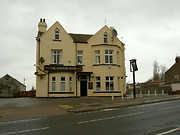 Created by Maureen Anderson
Donated by Maureen Anderson
Created by Maureen Anderson
Donated by Maureen AndersonPart of the Hartlepool Public Houses collection
Dated 2005
The Station Hotel was built in about 1872 at the side of the footpath which led to the village. It was to serve those arriving and departing by train. When first built it was said that it was 'A modern built building with a fashionable portico entrance, but rather built before its time'. By 2005, when this photo was taken, it was becoming harder for publicans to make a living and many pubs and hotels such as this were doomed.
In August 1874 the Hotel was advertised for sale by the owner Mr M Bell. In February of 1876 the owner was George Alderson who was advertising the Hotel for sale. At that time it was occupied by Mr WH Clough who would have been the tenant. The landlord in 1878 was Mark Bolton, 1879 John Waites. In August of 1881 the license was transferred from Christopher Waite to John Armstrong.
More detail » Station Hotel
Station Hotel
 Created by W Henderson
Donated by W Henderson
Created by W Henderson
Donated by W HendersonPart of the Hartlepool Public Houses collection
The Station, Station Lane, Seaton Carew, Hartlepool. Premises have been demolished and a Sainsburys store now stands on the site.
More detail » Station Hotel now Sainsburys
Station Hotel now Sainsburys
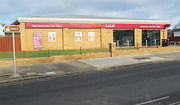 Created by Maureen Anderson
Donated by Maureen Anderson
Created by Maureen Anderson
Donated by Maureen AndersonThe lovely building that was the Station Hotel was demolished in 2011 to make way for this Sainsbury's store pictured in November 2012. No more to be said!
More detail » Temperance Hotel
Temperance Hotel
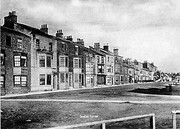 Created by Unknown
Donated by Maureen Anderson
Created by Unknown
Donated by Maureen AndersonDated 1888
A printed postcard showing the buildings on Front Street as it approaches Church Street. Second from the corner of Church Street is the Temperance Hotel. The image would be 1888 as a group can be seen outside Ambrose Storer's shop further along the street. This is the same group that is in two of James Pattison's photos.
More detail » The Front - Marine Hotel
The Front - Marine Hotel
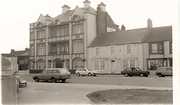 Donated by Hartlepool Library Services
Donated by Hartlepool Library ServicesPart of the Hartlepool Library collection
Dated 1981
 The Front Seaton Carew
The Front Seaton Carew
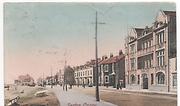 Donated by Mike Oxley
Donated by Mike OxleyThe Front, Seaton Carew, Hartlepool with The Marine Hotel on the right. Taken from a postcard. The image dates from between 1900 and 1923.
More detail » The Front, Seaton Carew
The Front, Seaton Carew
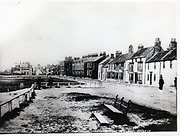 Donated by Hartlepool Library Service
Donated by Hartlepool Library ServiceThe Front, Seaton Carew with The Seven Stars Inn on the right hand side. The inn was demolished to make way for the Marine Hotel. The Hotel is the white building next to the black building.
HHT&N 562
More detail » The Green
The Green
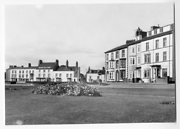 Donated by Hartlepool Museum Service
Donated by Hartlepool Museum ServiceThe Green, Seaton Carew showing The Norton Hotel on the right and the Seaton Hall Hotel to the left.
More detail » The Marine Hotel
The Marine Hotel
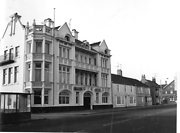 Donated by Hartlepool Library Service
Donated by Hartlepool Library ServiceThe Marine Hotel, Seaton Carew.
More detail » The Norton Hotel
The Norton Hotel
 Donated by Hartlepool Library Service
Donated by Hartlepool Library ServiceThe Norton Hotel, Seaton Carew, in the 60s. Built originally as the 'George & Dragon Inn' pre 1812.
More detail » Wedding at the Staincliffe Hotel
Wedding at the Staincliffe Hotel
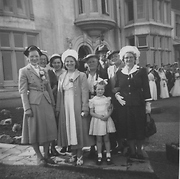 Donated by Mrs. Violet Butcher
Donated by Mrs. Violet ButcherThe Forstad family out in force at Muriel Johnson's wedding at the Staincliffe Hotel, Seaton Carew, sometime in the 1950s. In the front row we have (left to right), Joan, Olive and Jane Forstad, and Violet Smurthwaite.
More detail »






